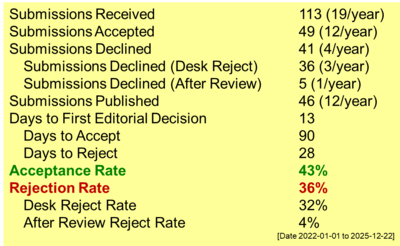Preparation of Flame Resistant Retanning Product for Glove Leather
DOI:
https://doi.org/10.55749/ijcs.v1i2.11Keywords:
Flame resistant leather, Glove leather, Leather solid waste, Protection, Protein recyclingAbstract
Leather gloves are very light leather used for protection against various risks. A flame-resistant product is needed to increase the flame resistance of natural leather. In this study, 02 flame resistant retanning products had been prepared utilizing waste leather protein extract with phosphoric acid and formaldehyde. These products had been applied at the retanning stage during leather processing. The utilization of phosphorus compounds chemically reacted with or deposited in leather fibers represented the most significant contribution in durable flame retardancy. The final prepared leathers had been characterized for different physical properties such as radiation and electric heat resistance, flame spread resistance and impact of spatter. These products had been found to be compatible with commercial flame-resistant products. The thermal behavior of prepared leathers showed significant resistance.
References
Duan, B. R., & Wang, Q. J. 2012. Influence of flame retardant on leather fatliquoring and fire resistance. Adv. Mat. Resh. 487, 748-752. doi: 10.4028/www.scientific.net/AMR.487.748. https://doi.org/10.4028/www.scientific.net/AMR.487.748
Cheng, F., Jiang, L., Chen, W., Gaidau, C.C., Miu, L. 2013. Influence of retanning materials with different properties on the flammability of leather. Leather Footwear J. 13(3), 179-186. https://doi.org/10.24264/lfj.13.3.1
Ke, H. M., Zhu, R. P., Ma, J. H., & Gong, J. H. 2020. Preparation and properties of halogen-free flame retardant polyurethane for superfine fiber leather. Mat. Sci. Forum. 993, 669-677. doi: 10.4028/www.scientific.net/MSF.993.669. https://doi.org/10.4028/www.scientific.net/MSF.993.669
Zhang, P., Xu, P., Fan, H., Zhang, Z., & Chen, Y. 2018. Phosphorus-nitrogen flame retardant waterborne polyurethane/graphene nanocomposite for leather retanning. J. Am. Leather Chem. Assoc. 113(5), 142-150.
Sanchez-Olivares, G., Sanchez-Solis, A., Calderas, F., Medina-Torres, L., Manero, O., Di Blasio, A., & Alongi, J. 2014. Sodium montmorillonite effect on the morphology, thermal, flame retardant and mechanical properties of semi-finished leather. Appl. Clay Sci. 102, 254-260. doi: 10.1016/j.clay.2014.10.007. https://doi.org/10.1016/j.clay.2014.10.007
Khatoon, M., Kashif, S., Saad, S., Umer, Z., & Rasheed, A. 2017. Extraction of amino acids and proteins from chrome leather waste. J. Waste Recycl. 2(2), 1-4.
Duan, B., Wang, Q., Wang, X., Li, Y., Zhang, M., & Diao, S. 2019. Flame retardance of leather with flame retardant added in retanning process. Results Phys. 15(102717), 1-5. doi: 10.1016/j.rinp.2019.102717. https://doi.org/10.1016/j.rinp.2019.102717
Lee, S. H., Oh, S. W., Lee, Y. H., Kim, I. J., Lee, D. J., Lim, J. C., Park, C. C., & Kim, H. D. 2020. Preparation and properties of flame-retardant epoxy resins containing reactive phosphorus flame retardant. J. Eng. Fibers Fabr. 15, 1-8. doi: 10.1177/1558925020901323. https://doi.org/10.1177/1558925020901323
Duan, B., Wang, Q., Wang, X., Wang, Q., Ren, P., Diao, S., & Yin, H. 2021. Study on Leather Modified with Nitrogen-Phosphorus Intumescent Flame Retardant in Fat Liquoring Process. Iran. J. Chem. Chem. Eng. 40(2), 683-689.
Battig, A., Sanchez-Olivares, G., Rockel, D., Maldonado-Santoyo, M., & Schartel, B. 2021. Waste not, want not: The use of leather waste in flame retarded EVA. Mater. Des. 210(110100), 1-16. doi: 10.1016/j.matdes.2021.110100. https://doi.org/10.1016/j.matdes.2021.110100
Mohamed, O. A., Youssef, A. M., Elsamahy, M. A., & Bloch, J. F. 2016. Fire retardant carton by adding modified leather waste. Egypt. J. Chem. 59(2), 253-268. https://doi.org/10.21608/ejchem.2016.971

Downloads
Published
How to Cite
Issue
Section
License
Copyright (c) 2022 Indonesian Journal of Chemical Studies

This work is licensed under a Creative Commons Attribution-ShareAlike 4.0 International License.






















